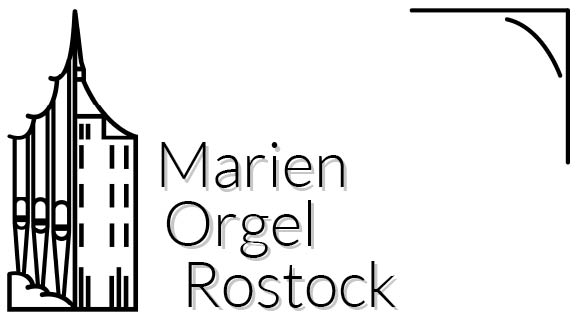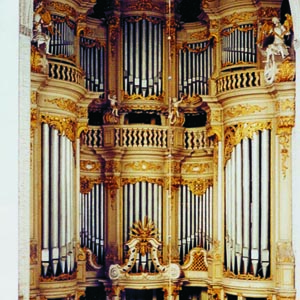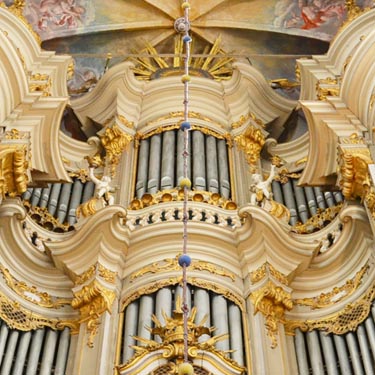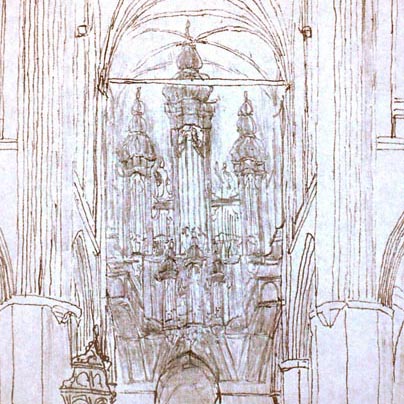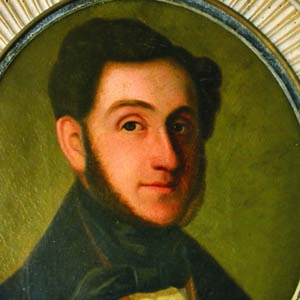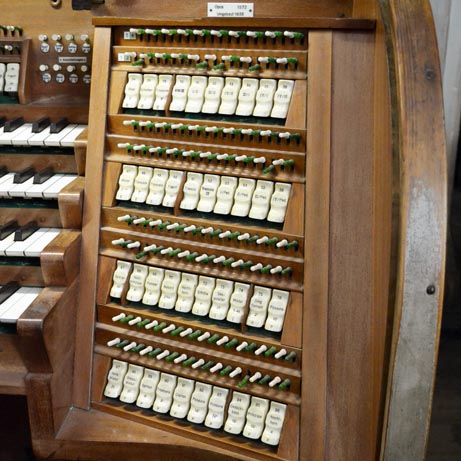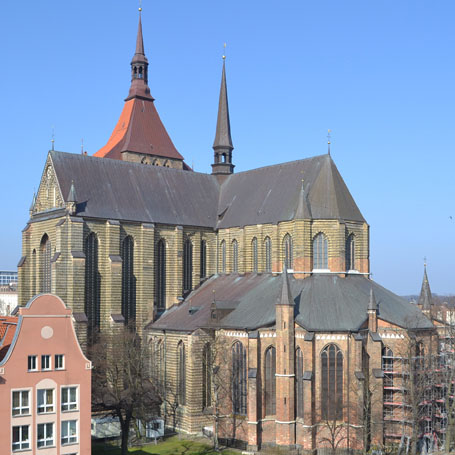The Great Organ from 1770
The impressive baroque facade of St. Mary’s organ was completed in 1770 by Rostock organ builder Paul Schmidt.
After several rebuilds of the technically faulty instrument by Marx (1793), Winzer (around 1845), Börger (1890-1911) and others, we find today an electro-pneumativ organ built in 1938 by Sauer, Frankfurt/Oder, consisting of 83 stops with 4 manuals and 5,700 pipes, retaining about 30 stops and windchests from previous organs.
More about the history of the baroque organ can be found in the following survey:
